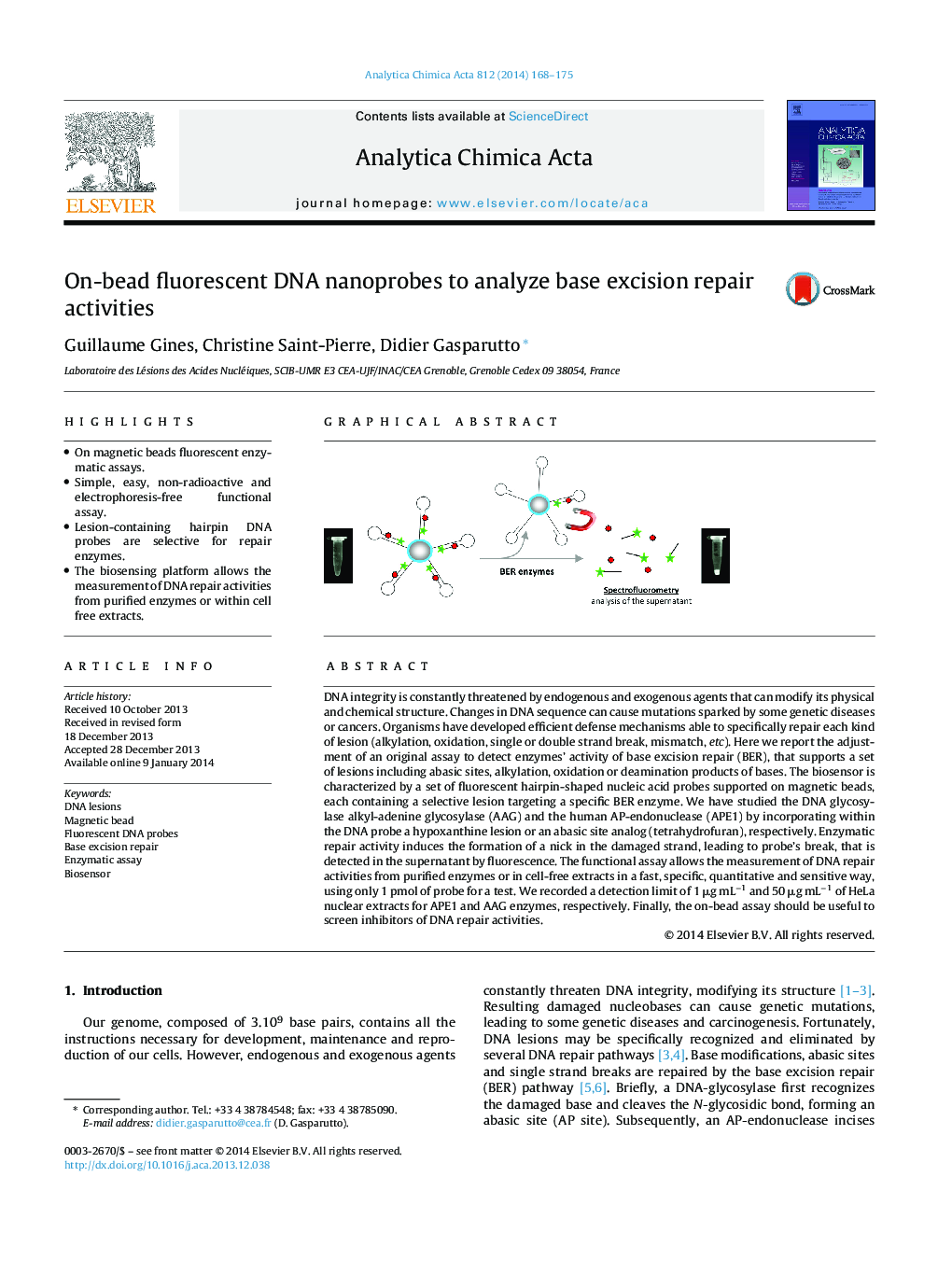| کد مقاله | کد نشریه | سال انتشار | مقاله انگلیسی | نسخه تمام متن |
|---|---|---|---|---|
| 1164148 | 1491020 | 2014 | 8 صفحه PDF | دانلود رایگان |

• On magnetic beads fluorescent enzymatic assays.
• Simple, easy, non-radioactive and electrophoresis-free functional assay.
• Lesion-containing hairpin DNA probes are selective for repair enzymes.
• The biosensing platform allows the measurement of DNA repair activities from purified enzymes or within cell free extracts.
DNA integrity is constantly threatened by endogenous and exogenous agents that can modify its physical and chemical structure. Changes in DNA sequence can cause mutations sparked by some genetic diseases or cancers. Organisms have developed efficient defense mechanisms able to specifically repair each kind of lesion (alkylation, oxidation, single or double strand break, mismatch, etc). Here we report the adjustment of an original assay to detect enzymes’ activity of base excision repair (BER), that supports a set of lesions including abasic sites, alkylation, oxidation or deamination products of bases. The biosensor is characterized by a set of fluorescent hairpin-shaped nucleic acid probes supported on magnetic beads, each containing a selective lesion targeting a specific BER enzyme. We have studied the DNA glycosylase alkyl-adenine glycosylase (AAG) and the human AP-endonuclease (APE1) by incorporating within the DNA probe a hypoxanthine lesion or an abasic site analog (tetrahydrofuran), respectively. Enzymatic repair activity induces the formation of a nick in the damaged strand, leading to probe's break, that is detected in the supernatant by fluorescence. The functional assay allows the measurement of DNA repair activities from purified enzymes or in cell-free extracts in a fast, specific, quantitative and sensitive way, using only 1 pmol of probe for a test. We recorded a detection limit of 1 μg mL−1 and 50 μg mL−1 of HeLa nuclear extracts for APE1 and AAG enzymes, respectively. Finally, the on-bead assay should be useful to screen inhibitors of DNA repair activities.
Figure optionsDownload as PowerPoint slide
Journal: Analytica Chimica Acta - Volume 812, 17 February 2014, Pages 168–175